Introducing the Carbon Conscience App
A new tool allows planners and designers to reduce embodied carbon from the early stages of planning
 Sasaki
Sasaki
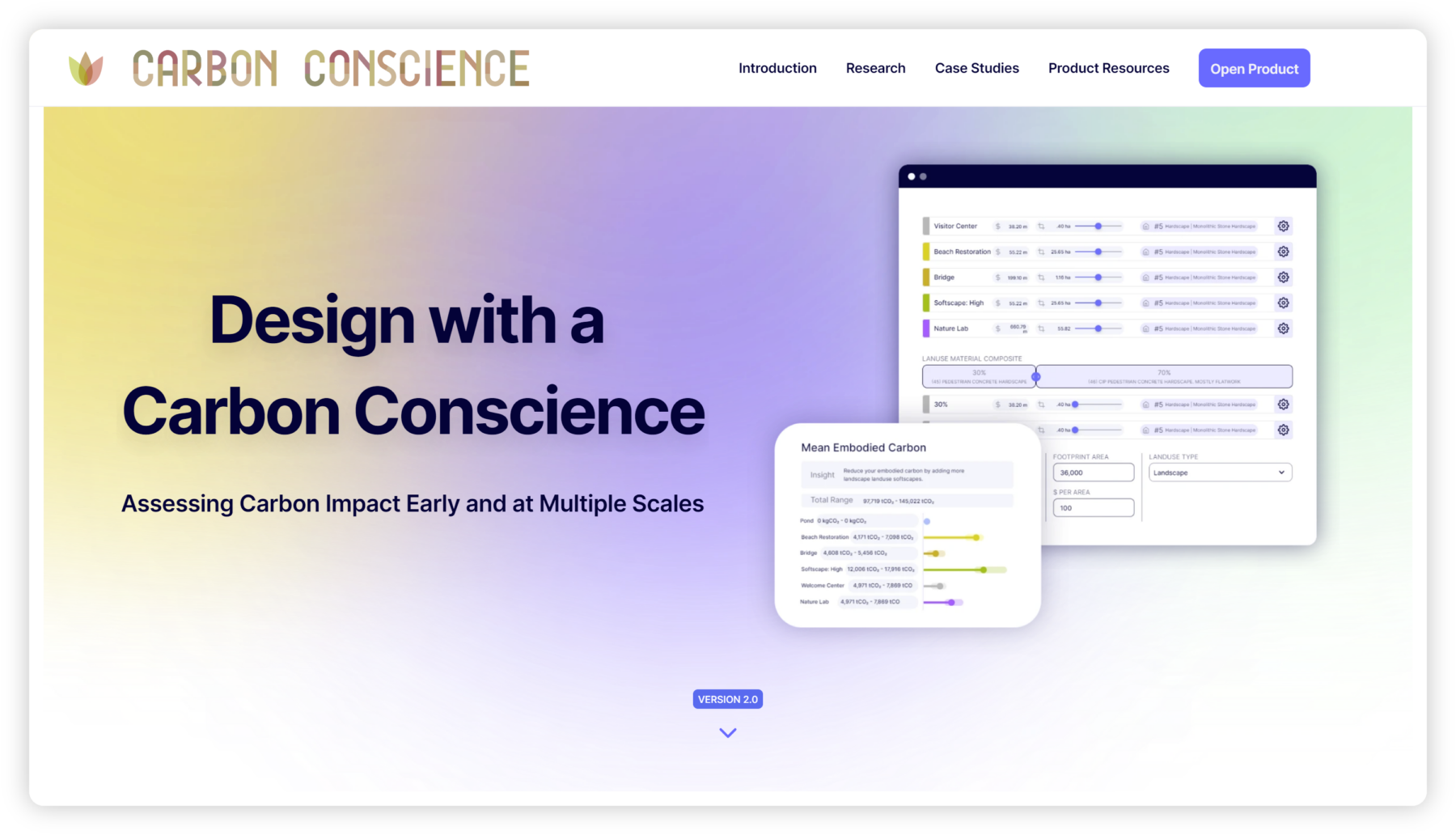
Today, Sasaki is excited to announce the release of Carbon Conscience 2.0, a carbon calculator that allows users to test and iterate at crucial stages when the design is most flexible. These early-stage interventions enable designers to establish carbon benchmarking and goals for the project’s detailed design phases.
Carbon Conscience 2.0 is currently the only platform that supports district-scale, early-phase, whole-project-life-cycle analysis inclusive of site and building data. This version replaces the beta Version 1; incorporates feedback from experts, users, and both academic and professional peer reviewers; and represents the first full ‘gamma version’ of the Carbon Conscience platform.
By providing Carbon Conscience to the design community as a free and publicly accessible tool, we hope to empower designers and planners with data to more effectively advocate for low-carbon design, early in the design process.
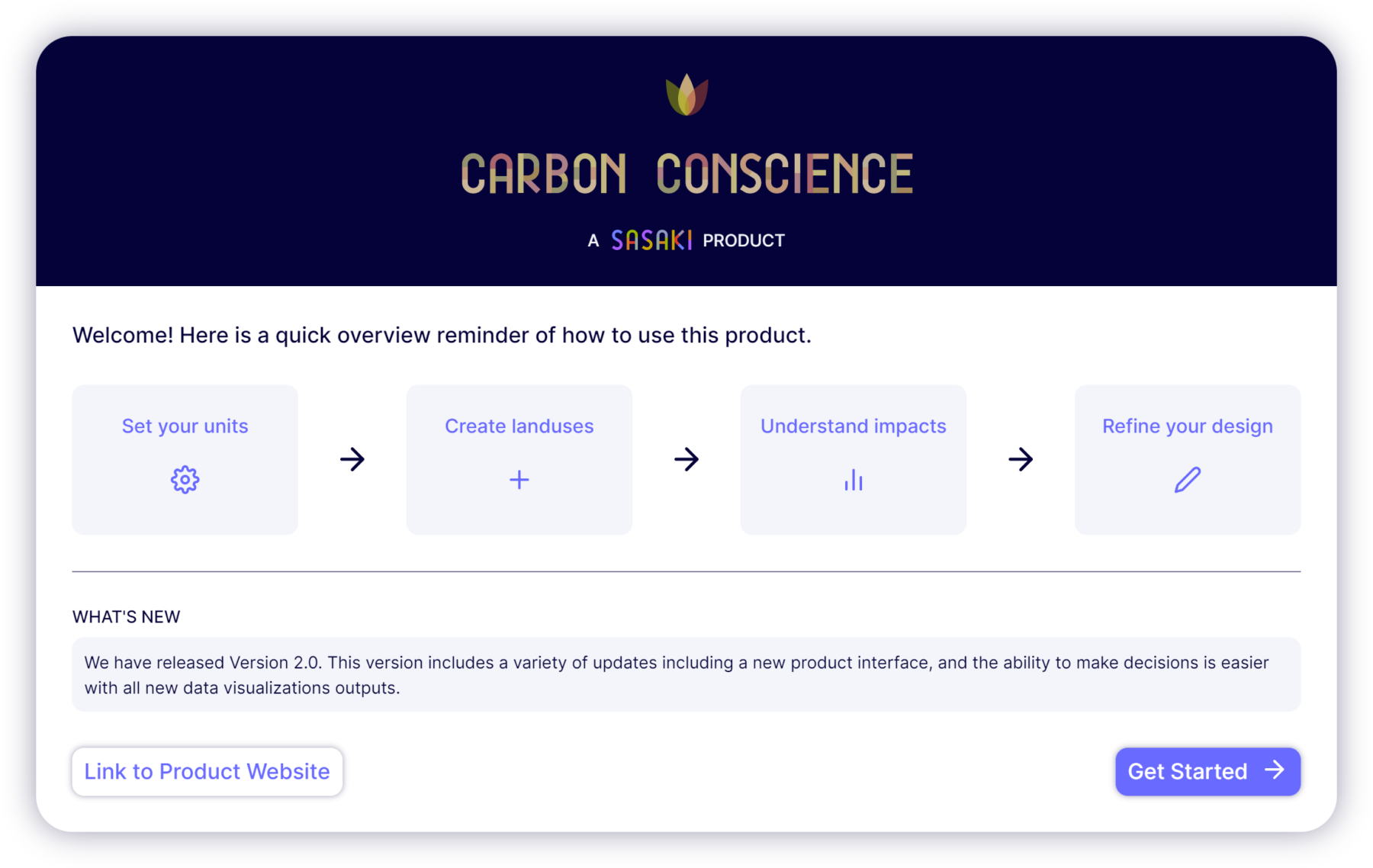
Our team at Sasaki faced a challenge in the urban design and concept design phases of work—we knew the decisions we were advising on could have potentially huge global warming-associated emissions—but we didn’t know how to advocate in those early design phases. All existing carbon calculators required detailed design decisions, accurate bills of quantities, and schedules of materials—inputs that required a technical stage level of detail. As an integrated practice of architects, planners, landscape architects, civil engineers, and ecologists, we also understood the value of living systems in contributing to carbon sequestration and storage.
In response, we created Carbon Conscience Beta to test and explore what an early-phase tool could do to help planners and designers understand the carbon impacts of their proposals. We combined landscape, architectural, and ecological datasets to create a library of land uses that could be sketched with and iterated upon. We spent the last year testing this tool, diving deeper into the data, and getting peer reviews.
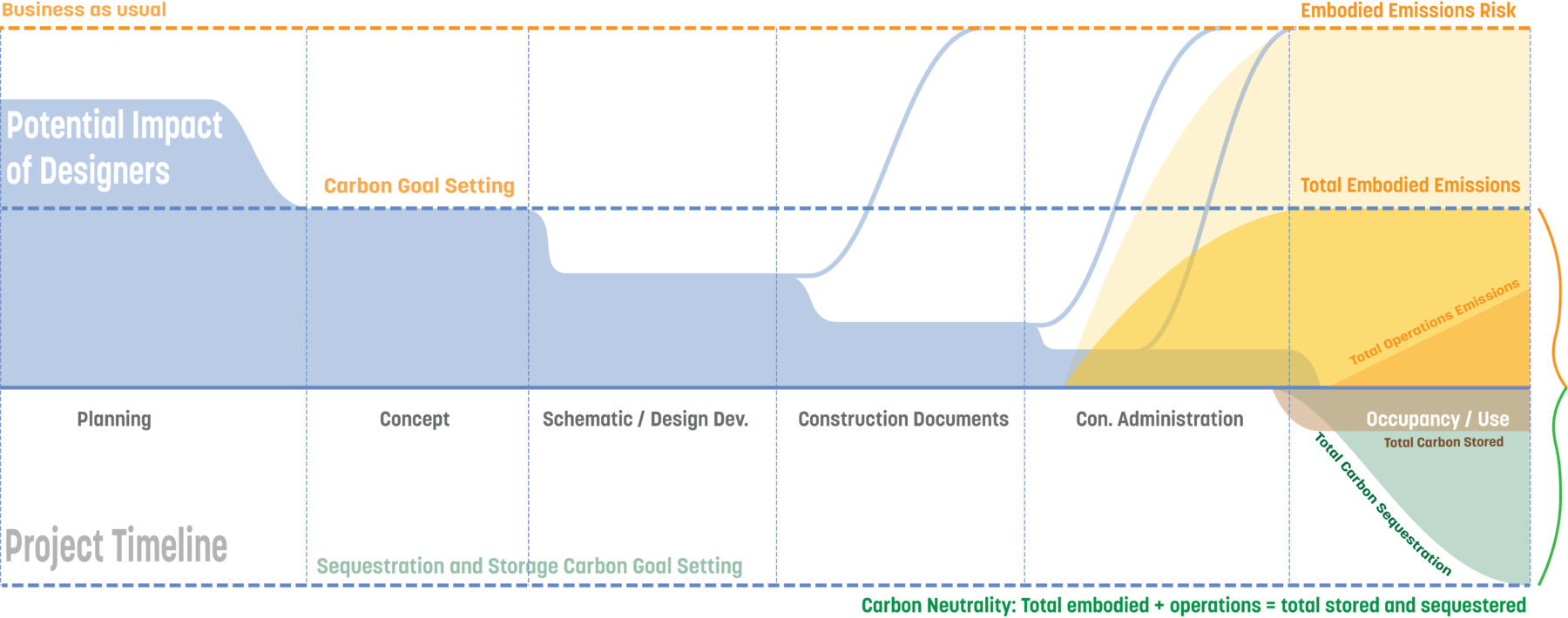
Concept diagram comparing capacity for changing carbon goal and delivery throughout the lifespan of a design project
You can use the app here, where you’ll also find links to the revised and expanded white paper, Carbon Conscience Guidelines for low-carbon best practices, and other helpful links and resources.
Carbon Conscience 2.0 includes a completely rebuilt landscape architectural dataset, developed through Sasaki landscape architect Chris Hardy’s research as part of his 2023 Landscape Architecture Foundation Fellowship. Hardy created a landscape baseline materials database for 148 unique materials and product typologies, as well as a new model based on cited literature for ecosystem and softscape sequestration projections, inclusive of biomass, soil organic carbon, and allochthonous carbon. This work supports Climate Positive Design. It will also be part of the American Society of Landscape Architects Climate Action Plan’s next generation of decarbonizing design tools and resources.
The richness of data in the updated application enables users to refine land use assumptions. Users can pick between options for materials items, such as percent recycled material, aggregate binders, or supplementary cementitious materials. They can also revise assumptions about transportation methods and distances for materials procurement and delivery to the site.

The tool’s functionality has broadened to enable more effective gamification of the planning design process. In a dynamic interface, users can first define a business-as-usual benchmark plan, then refine the plan and composition, both in terms of land use and material expectations. This helps users create feasible carbon goals for their project and then create design guidelines for supporting material and procurement considerations.
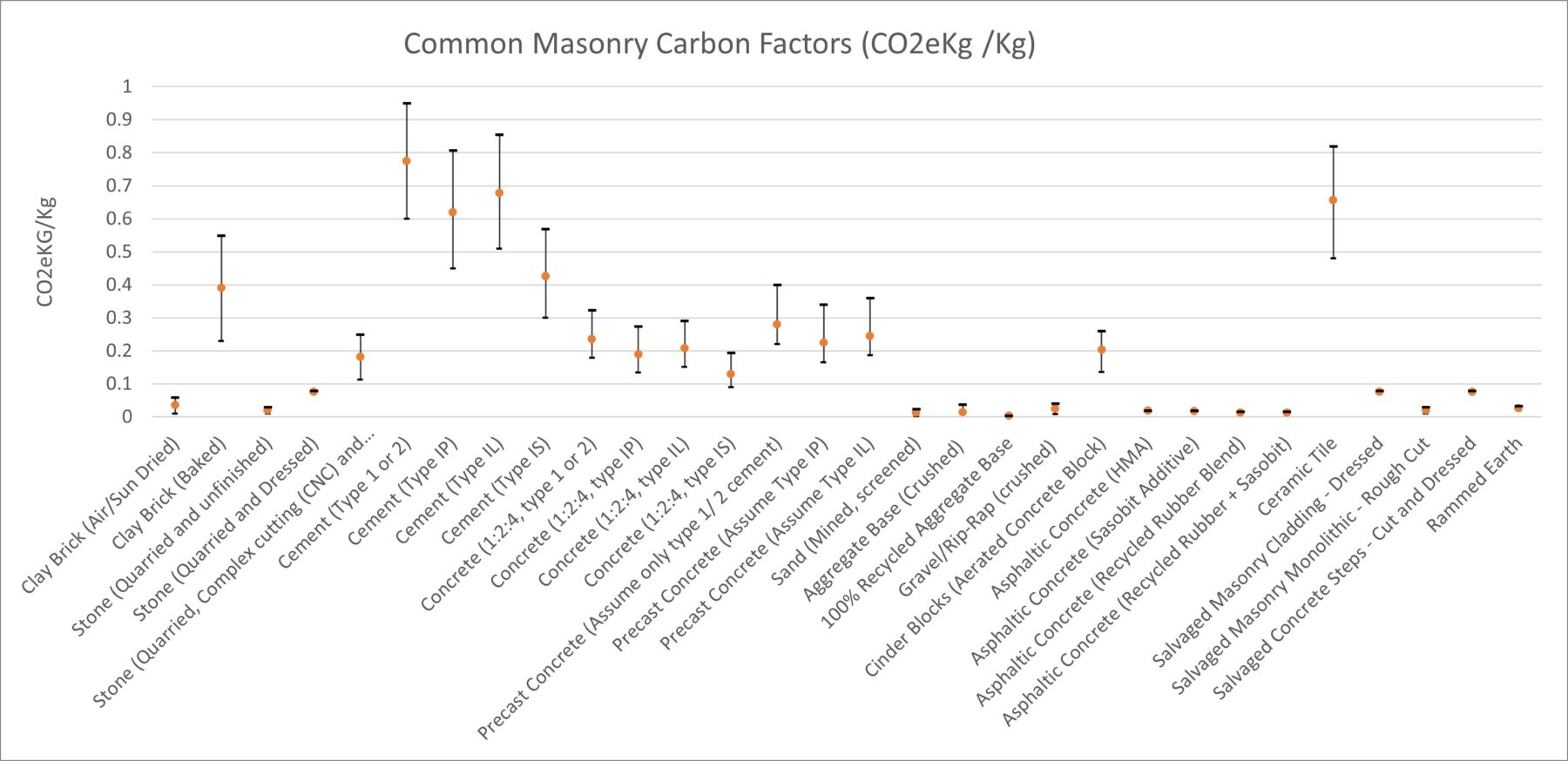
Select masonry materials from the new landscape materials database
Carbon Conscience 2.0 refines all uses of site land to include lighting, civil, and MEP scopes. With the addition of 60 new land uses, including salvage and new infrastructure categories, this dataset now represents a diversity of landscape architectural, restoration ecology, and civil engineering scopes, which enables users to account for overall site work.
Another new feature is the ability to layer land uses. Users can now add assumptions about demolition to the finished land uses, as well as mix and layer constructed land use to get even more specific, like adding a green roof to a building or accounting for building setbacks without having massing-level detail available. With other improvements, including refined reporting, exporting, and importing of data, CC2 represents a comprehensive upgrade. Accepting climate responsibility for our work must go beyond carbon accounting to exploring design opportunities.
CC2 would not have been possible without the support and mentorship of partner organizations and advisors, specifically the Landscape Architecture Foundation, Climate Positive Design, Architecture2030, the Carbon Leadership Forum, and EHDD.
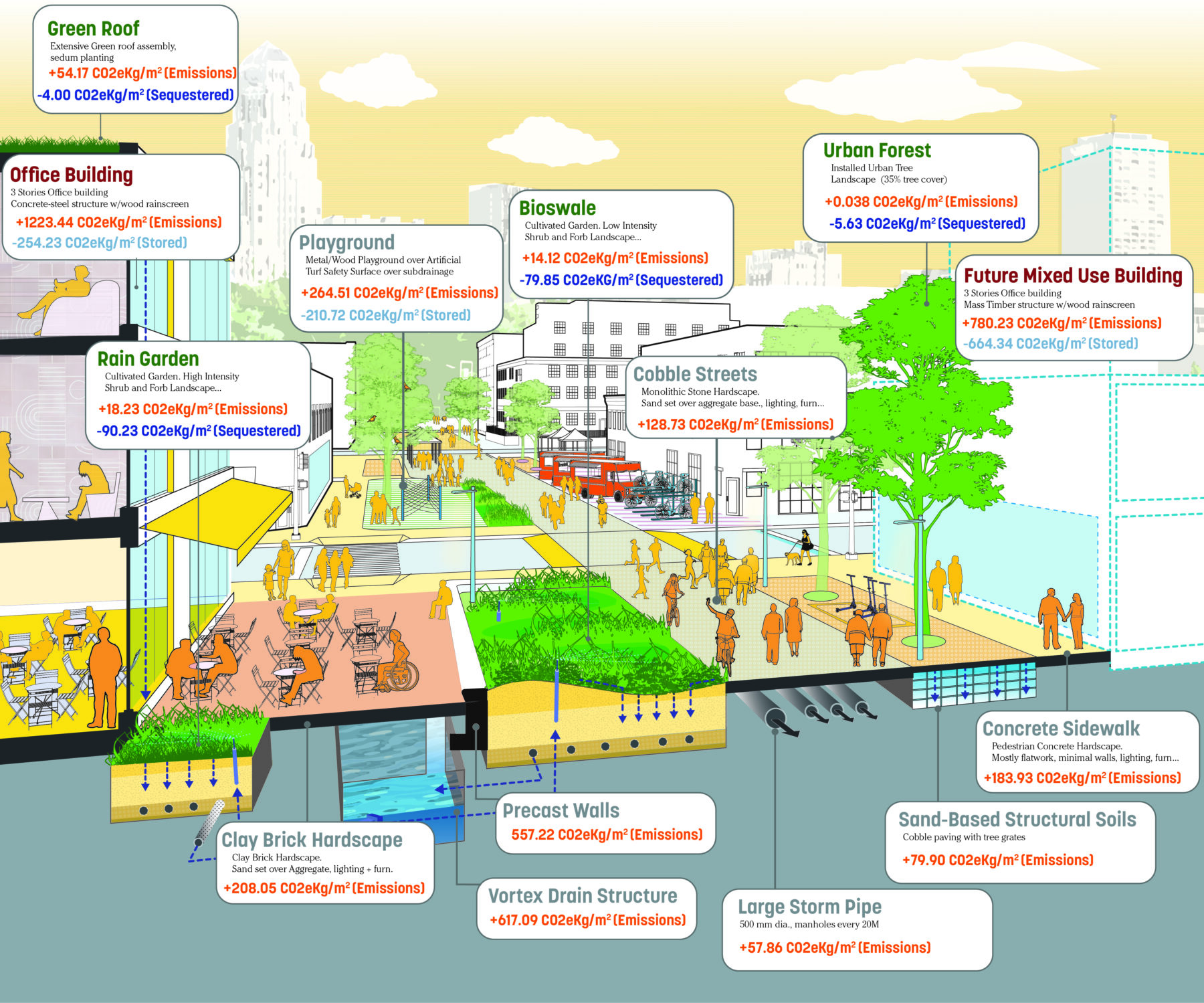
If you would like to review the methods and citations used to create the dataset and application, please check out the supporting research paper here. We encourage users to also review the Carbon Conscience Guidelines here for a short summary of best practices. These are living documents, and we welcome recommendations and critiques. Please contact us if you would like to reach out.
Stay tuned for Carbon Conscience Version 3, anticipated later this fall, which will advance the architectural datasets in collaboration with EHDD’s Epic platform and other industry partners.
A new tool allows planners and designers to reduce embodied carbon from the early stages of planning
A strong support for designers to develop "Carbon Conscience" with straightforward operation
Sasaki landscape architect Chris Hardy imagines a future where designers and planners can bring carbon sensitive design to every project